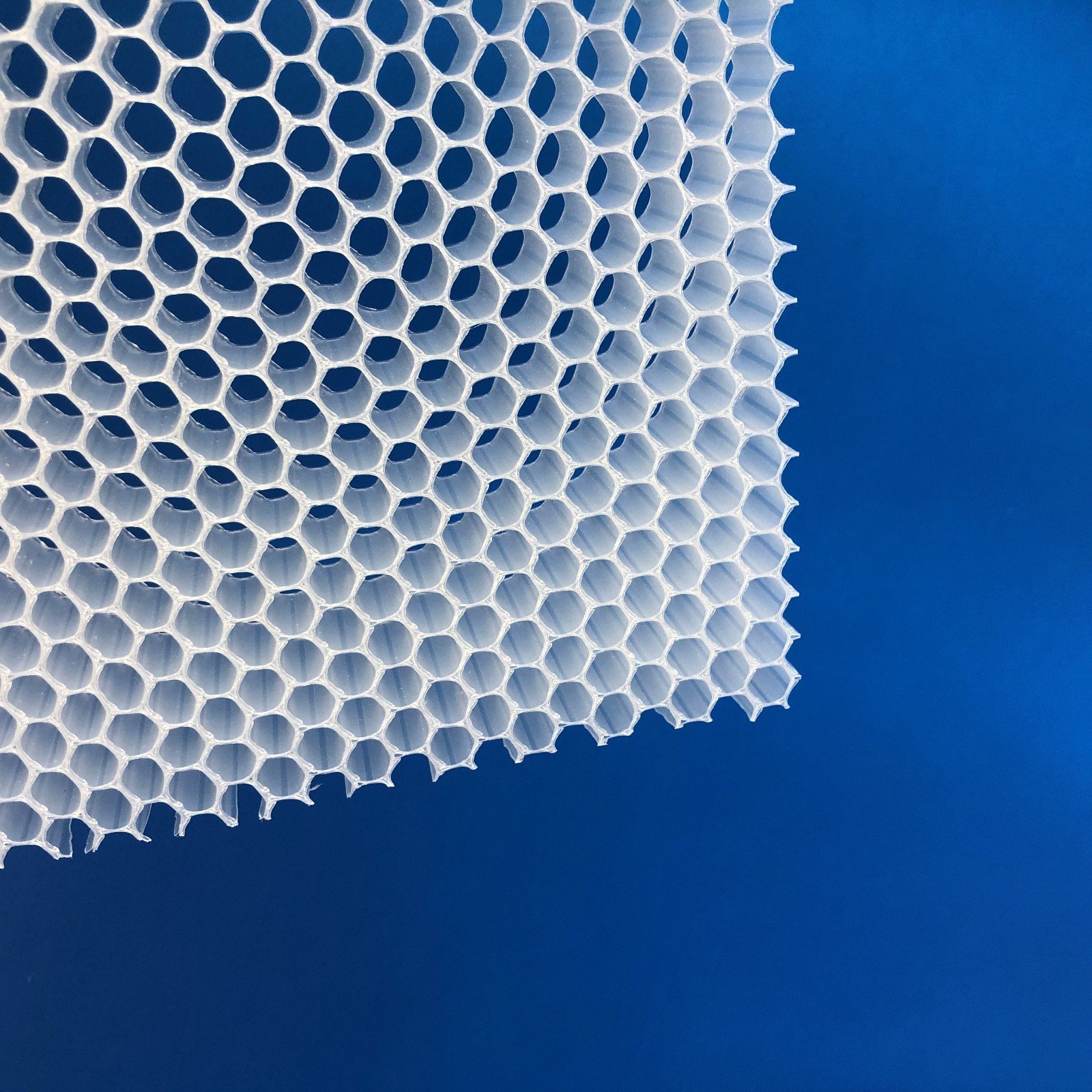The Engineering Principle of Optimized Geometry
The exceptional performance of the honeycomb structure is rooted in efficient material geometry. Our plastic honeycomb core panels achieve their remarkable high strength-to-weight ratio by strategically distributing material where it offers the greatest mechanical advantage, maximizing bending stiffness while minimizing mass.
This principle relies on forming a sandwich panel composite. The structure consists of two thin, strong facing sheets (skins) separated by a low-density core of interconnected hexagonal cells.
How the Honeycomb Core Resists Load
When a force is applied to a composite panel, the components play distinct and vital roles:
l The Facing Sheets (Skins): These layers carry almost all the tensile and compressive stresses (bending moments). The strength of the panel increases exponentially with the distance between the skins. By using the low-density honeycomb core to separate these skins, we effectively create a deep, structural beam without adding solid material in the neutral axis where stress is minimal.
l The Honeycomb Core: The primary function of the core is to resist shear forces and maintain the precise distance between the facing skins. The hexagonal walls are aligned perpendicular to the skins, making them highly efficient at resisting lateral movement and preventing the skins from buckling or wrinkling under compression.
This combined action ensures that the entire cross-section of the panel is engaged in resisting the load, leading to significantly higher stiffness and strength compared to a solid panel of the same weight. The geometric distribution of material is the key: material volume is converted into structural depth.

The Plastic Advantage
Specifically, when utilizing thermoplastic honeycomb cores (such as PP), we marry this geometric efficiency with the inherent benefits of the polymer:
l Isotropic Performance: The regular circular cell pattern provides near-uniform performance characteristics in all directions, crucial for reliability in diverse industrial applications.
l Durability: The plastic material ensures resistance to moisture and corrosion, maintaining structural integrity over the long term, unlike materials susceptible to environmental degradation.

By understanding and harnessing the principles of the honeycomb sandwich structure, engineers can design components for transportation, construction, and specialized machinery that are demonstrably lighter, more fuel-efficient, and structurally robust.

